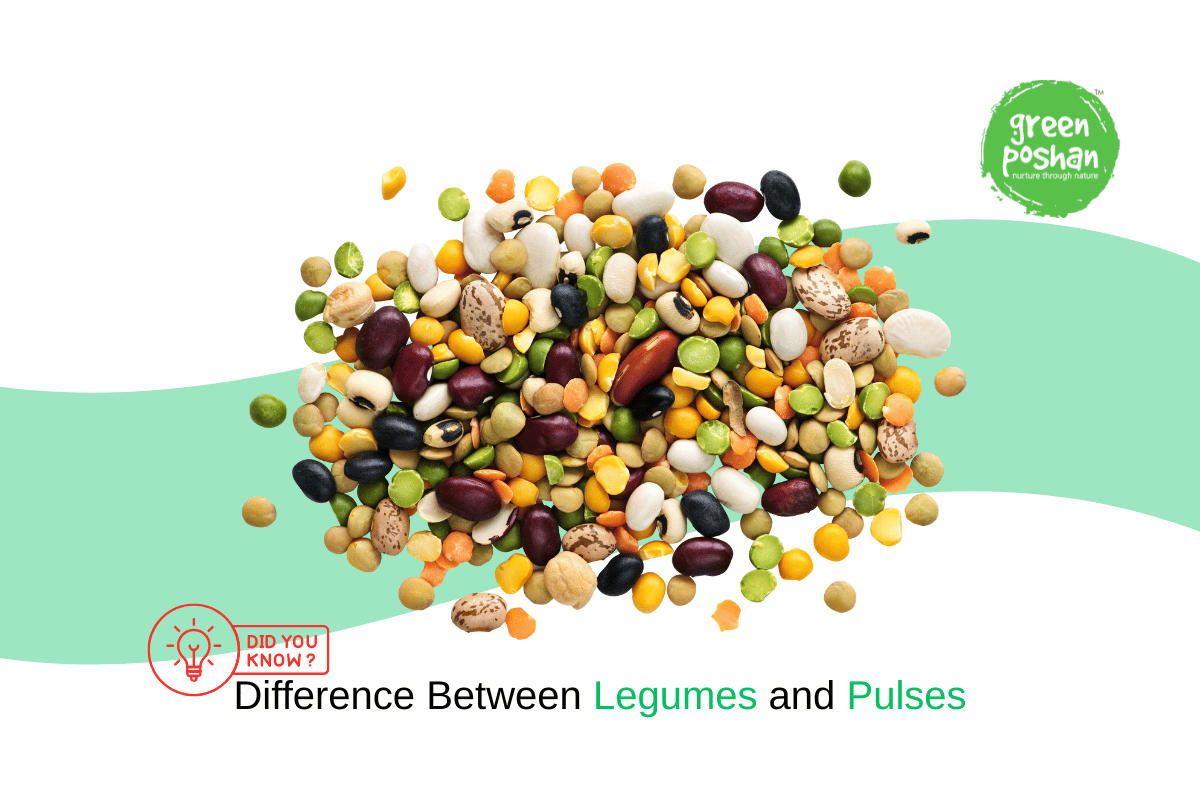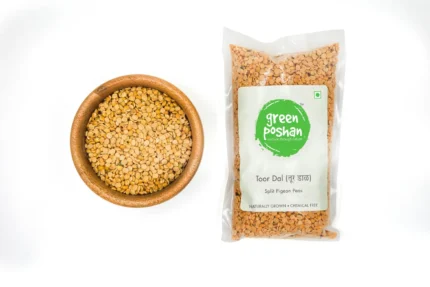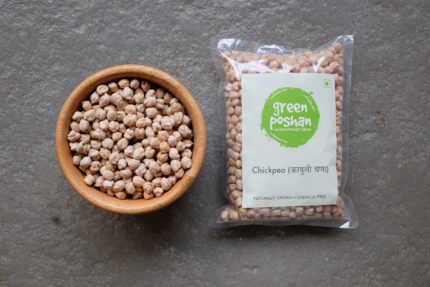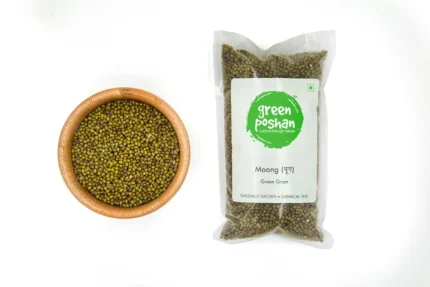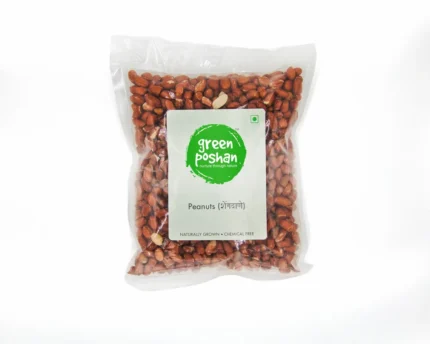In every Indian household, dishes like dal-chawal, rajma-chawal, chole-bhature, khichdi, and sprouted moong are part of daily meals. These foods come from legumes and pulses. While the two terms are often used interchangeably, there are clear differences. Understanding the difference between legumes and pulses helps us make healthier food choices.
What Are Legumes?
Legumes are plants that grow in pods and include a wide range such as beans, peas, chickpeas, soybeans, and peanuts. They provide protein, healthy fats, and essential vitamins.
Examples of legumes: green peas (matar), peanuts (moongfali), chickpeas (chana), soybeans (soya).
What Are Pulses?
Pulses are a subgroup of legumes. They are the dried edible seeds of legume plants and are widely consumed in Indian diets for their high protein and fiber content.
Examples of pulses: masoor dal, urad dal, chana dal, moong dal, rajma, toor dal (arhar dal).
Legumes and Pulses Difference
| Feature | Legumes | Pulses |
| Definition | Plants that grow in pods | Dried edible seeds of legume plants |
| Varieties | Includes beans, peas, peanuts, soybeans, etc. | Includes lentils, chickpeas, dry beans, etc. |
| Nutrition | Source of protein, vitamins, healthy fats | High in protein, fiber, iron, low in fat |
| Examples | Green peas, peanuts, soybeans | Masoor dal, rajma, chana dal, moong dal |
Nutrition and Health Benefits of Legumes and Pulses
- High Protein: Pulses like rajma, chana, and toor dal are rich in protein and form the backbone of vegetarian diets.
- Fiber Content: Legumes and pulses aid digestion, improve gut health, and keep you feeling fuller.
- Rich in Minerals: They provide iron, potassium, magnesium, and folate.
- Ayurvedic Benefits: Moong dal is considered light and easy to digest, chana helps build strength, and urad dal supports bone and joint health.
Recommended products
-
TOOR DAL — 1kg
₹249.00 -
Kabuli Chana — 500g
₹140.00 -
Moong — 500g
₹95.00 -
Peanuts — 500g
₹118.00
Uses in Regional Indian Cuisines
- North India: Rajma-chawal, chole-bhature, dal makhani.
- South India: Sambar and rasam with toor dal, adai dosai made with mixed lentils.
- Maharashtra and Gujarat: Puran poli (chana dal filling), dal dhokli.
- Rajasthan: Panchmel dal prepared with five different lentils.
- Festival Foods: Chana dal sweets like besan laddoo during Diwali, puran poli during Ganesh Chaturthi.
Seasonal and Traditional Practices
- Summer: Light dals such as moong dal are consumed for easy digestion.
- Winter: Heavier dishes like dal makhani made from urad dal are preferred.
- Mango Season: Aamras-puri is often paired with varan dal in Maharashtra.
- Fasting Rituals: Light options such as sabudana khichdi combined with peanuts (a legume) are popular.
Why Choose Green Poshan Legumes and Pulses?
At Green Poshan, we bring you naturally grown legumes and pulses cultivated using traditional farming methods. Our products are:
- Free from chemicals and pesticides
- Rich in natural taste and nutrition
- Sourced directly from farms to ensure purity
From your daily dal to festive delicacies, Green Poshan ensures that every meal is wholesome and nourishing.
Explore our range of pulses, lentils, and legumes at Green Poshan and bring home the purity of nature.
The difference between legumes and pulses lies in their form and use, but both are essential to Indian diets, festivals, and traditional health practices. With their nutritional benefits and cultural relevance, they continue to be a vital part of our lifestyle.
Choose Green Poshan for your pulses and legumes to enjoy authentic, chemical-free, and naturally grown nutrition every day.

